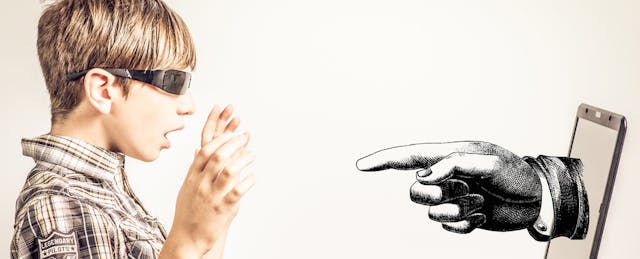Editor’s Note: ‘Tis the trendy season for trends, to reflect on 2015 and to make bold predictions about what next year may hold. This year, we asked thought leaders to share their outlooks on education, but with a twist. They have to frame their thoughts as a response to some of the finest college application essay prompts—yes, the very same ones that high school seniors are feverishly working on now!
Here's what Kentaro Toyama, Professor of Community Information at the University of Michigan and author of Geek Heresy: Rescuing Social Change from the Cult of Technology, had to say:
Writing prompt: Orange is the new black, fifty’s the new thirty, comedy is the new rock ‘n’ roll, ___ is the new ___. What’s in, what’s out, and why is it being replaced?
Digital technology is the new opiate of the masses
In the mid-1990s, as the Internet was going mainstream, educators began sounding an alarm about the digital divide—the chasm in access to digital technologies that separated the haves from the have-nots, particularly in schools.
Just two decades later, though, it’s hard to believe we worried at all. Digital screens—whether as laptops or smartphones—are becoming common items even in low-income households. Worldwide, there are more mobile phone accounts than there are people on the planet.
It’s not that the digital divide has fully closed. In the United States, poorer families disproportionately lack broadband, for example. The rich can always afford more technology. But, it is increasingly difficult to find classrooms and libraries—even in poorer neighborhoods—that don’t have computers and Internet connectivity.
Except, that is, in some expensive private schools. Earlier this year, there was a spate of articles in the UK about the London Acorn School, a $16,000-a-year school whose charter says, “We are against all forms of electronics for small children…and only gradual integration towards it in adolescence.” The school not only bans devices the classroom, but asks parents to prohibit technology use otherwise.
The Acorn School is not alone. Many of America’s 160 or so Waldorf Schools—all independently operated private schools— also prohibit digital technology in the classroom for younger students. And, Steve Jobs famously avoided letting his children use iPads: “We limit how much technology our kids use at home.”
These parents are responding to accumulating evidence about digital distraction: The American Academy of Pediatrics recommends that parents closely monitor digital device use by their children. This year, the OECD reported that around the world, students making frequent use of computers fared worse academically than their peers. Researchers at the London School of Economics determined that banning mobile phones at school was worth an extra week of classes each year.
All of this is to say that well-educated parents are heeding the science about digital technology’s dubious effects on learning, and wealthier families are paying top dollar to limit how much screen time their children have.
The flip side, though, is that families who are less aware of the research are falling on the wrong side of an inverted digital divide. Many welcome technology in their schools under the misguided impression that spending more time with a computer in and of itself makes their children more eligible for Silicon Valley jobs. But that promise is empty. It makes no more sense than to do a lot of driving as a way to become an engine designer at Ford. What’s worse, the myth is actively propagated by well-paid technology cheerleaders, some of whom no doubt have nannies at home, instructed to keep their children away from technology.


